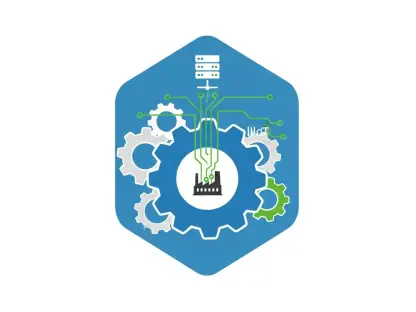Setting the Stage for Shadow AI’s Impact on Manufacturing
Imagine a bustling manufacturing plant where artificial intelligence (AI) tools streamline production at an unprecedented pace, slashing downtime and optimizing supply chains in real time. Yet, hidden beneath this technological triumph lies a startling reality: nearly 79% of employees are using unapproved AI tools, often exposing sensitive data to potential breaches. This phenomenon, known as shadow AI, represents both a market disruptor and a looming threat in the manufacturing sector. This analysis aims to dissect the dual nature of shadow AI, leveraging data from a comprehensive study of 700 professionals and IT decision-makers across the U.S. and Canada. By exploring current trends, risks, and future projections, the goal is to provide actionable insights for industry stakeholders to navigate this complex landscape, balancing innovation with security in a highly competitive market.
Analyzing Market Trends and Projections for Shadow AI
The Surge of AI Adoption in Manufacturing Workflows
The manufacturing sector has witnessed a rapid integration of AI technologies, transforming operational efficiency across diverse processes. From predictive maintenance to demand forecasting, AI tools are automating repetitive tasks, reducing costs, and enhancing adaptability to market fluctuations like shifting tariff policies. Data indicates that accessible cloud-based platforms have fueled this adoption, empowering employees to implement solutions swiftly, often bypassing formal IT channels. This trend of employee-driven innovation is reshaping the market, with projections suggesting that AI penetration in manufacturing could deepen significantly over the next two years, driven by the need for real-time responsiveness.
Shadow AI as a Double-Edged Market Force
While AI drives competitive advantage, the rise of shadow AI—unauthorized tools used without oversight—introduces a critical market vulnerability. The study highlights that 44% of employees input client data and 46% share internal company information into unvetted platforms, creating substantial exposure to data breaches and regulatory penalties. This unchecked usage not only threatens individual firms but also impacts market stability, as a single high-profile breach could erode trust across the sector. Market analysis suggests that without intervention, the financial fallout from such risks could escalate, potentially costing billions in fines and lost business by 2027.
Cultural Dynamics Shaping Shadow AI Adoption Rates
Beyond technical challenges, cultural factors within the manufacturing workforce significantly influence shadow AI’s market presence. An alarming 98% of employees trust these unapproved tools to safeguard their data, while 45% perceive minimal risk in their usage, revealing a dangerous naivety. Regional variations also play a role, with tech-savvy markets showing higher adoption rates due to familiarity with digital tools. This cultural gap poses a market challenge, as misplaced trust could delay the adoption of secure alternatives, but it also presents an opportunity—66% of employees express a desire for better training, indicating a potential shift toward safer practices if guided by strategic education initiatives.
IT Governance Struggles Amid Rapid Market Shifts
IT departments in manufacturing firms are grappling with the pace of AI adoption, a trend that shapes market dynamics profoundly. With 77% of IT leaders admitting that employee usage outstrips their ability to assess or control it, the gap between innovation and governance widens. This struggle is compounded by senior leadership often underestimating risks, with 62% of IT professionals noting a lack of concern at executive levels. Market projections warn that without robust governance frameworks, the manufacturing sector risks fragmented AI integration, potentially leading to inconsistent security standards and diminished competitive positioning over the coming years.
Emerging Solutions and Market Opportunities
Looking ahead, the market for AI in manufacturing is poised for transformation through strategic solutions to shadow AI challenges. Investments in secure, cloud-based AI platforms and in-house proprietary systems using open-source models with retrieval-augmented generation (RAG) are gaining traction, ensuring data remains within controlled environments. Regulatory frameworks are also expected to tighten, pushing firms to prioritize compliance in tool selection. Analysts predict that manufacturers who proactively adopt vetted AI solutions and foster a culture of security awareness will capture a larger market share, turning the liability of shadow AI into a strategic differentiator by the end of this decade.
Reflecting on Shadow AI’s Market Implications
Looking back, the exploration of shadow AI in manufacturing revealed a sector at a critical juncture, where the promise of AI-driven efficiency was tempered by significant risks of unauthorized tool usage. The analysis underscored how cultural naivety and governance gaps amplified vulnerabilities, with substantial data exposure threatening market stability. For industry leaders, the path forward involves actionable steps: rigorous vetting of AI tools for security compliance, development of internal AI stacks to protect sensitive information, and comprehensive employee training to bridge awareness gaps. Regular audits and sandbox testing environments also emerged as vital tactics to curb unchecked innovation. By implementing these strategies, manufacturers could transform shadow AI from a market risk into a catalyst for secure, sustainable growth, ensuring that technological advancement aligns with long-term competitiveness.









